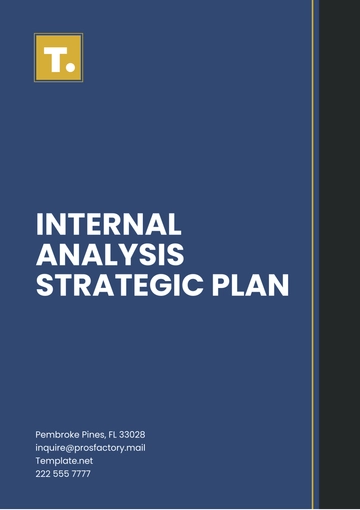Free E-commerce Marketing Strategic Plan

Prepared by: [YOUR NAME]
Date: [DATE]
I. Executive Summary
This e-commerce marketing plan outlines a strategy to increase online sales, enhance brand visibility, and improve customer engagement for the upcoming fiscal year. The plan focuses on optimizing digital channels, leveraging social media, and enhancing customer experience through data-driven insights.
II. Market Analysis
A. Industry Overview
The e-commerce sector is rapidly growing, with trends indicating a shift towards mobile commerce, personalized shopping experiences, and sustainability. Understanding these trends is critical to tailoring our marketing strategies to meet consumer demands effectively.
B. Target Market
The primary target market includes tech-savvy consumers aged 18-45 who value convenience, variety, and competitive pricing. This demographic appreciates personalized recommendations and seamless online experiences.
C. Competitive Analysis
Key competitors include large e-commerce platforms and niche market players. A SWOT analysis revealed our strengths in unique product offerings and customer loyalty while highlighting threats such as price competition and market saturation.
III. Marketing Goals and Objectives
Increase online sales by 20% over the next year.
Enhance brand visibility and reach by 30% through digital channels.
Improve customer engagement and retention rates by implementing personalized marketing strategies.
IV. Strategic Initiatives
A. Search Engine Optimization (SEO)
Optimize website content and structure to improve search engine rankings. Focus on long-tail keywords, enhancing page load speeds, and creating high-quality, relevant content.
B. Social Media Marketing
Expand presence on major social media platforms such as Facebook, Instagram, and TikTok. Utilize targeted ads, influencer collaborations, and interactive posts to engage with the audience effectively.
C. Email Marketing Campaigns
Develop segmented email campaigns offering personalized product recommendations, exclusive discounts, and educational content to nurture and convert leads.
D. Content Marketing
Create valuable, informative blog content, how-to guides, and video content that addresses customer pain points and establishes brand authority.
E. Promotional Strategies
Implement seasonal promotions, flash sales, and loyalty programs to increase customer acquisition and retention. Encourage user-generated content to foster community and brand loyalty.
V. Budget Allocation
Initiative | Budget (%) |
|---|---|
Search Engine Optimization | 25% |
Social Media Marketing | 30% |
Email Marketing | 15% |
Content Marketing | 20% |
Promotional Strategies | 10% |
VI. Performance Monitoring and Evaluation
Regular assessment of the marketing initiatives will be conducted using key performance indicators (KPIs) such as conversion rates, customer acquisition cost, website traffic growth, and return on marketing investment (ROMI). Monthly analytics reports will guide iterative strategy refinement.
VII. Conclusion
This e-commerce marketing strategic plan lays the foundation for achieving significant growth in online sales, brand visibility, and customer engagement. By focusing on data-driven decision-making, optimizing digital channels, and creating personalized customer experiences, the company is well-positioned to capitalize on current market trends. Successful implementation of the outlined initiatives, coupled with continuous monitoring and optimization, will ensure that we not only meet our marketing objectives but also strengthen our competitive edge in the e-commerce landscape. With a clear vision and actionable strategies, this plan will guide us toward sustained business success in the coming year.
- 100% Customizable, free editor
- Access 1 Million+ Templates, photo’s & graphics
- Download or share as a template
- Click and replace photos, graphics, text, backgrounds
- Resize, crop, AI write & more
- Access advanced editor





























